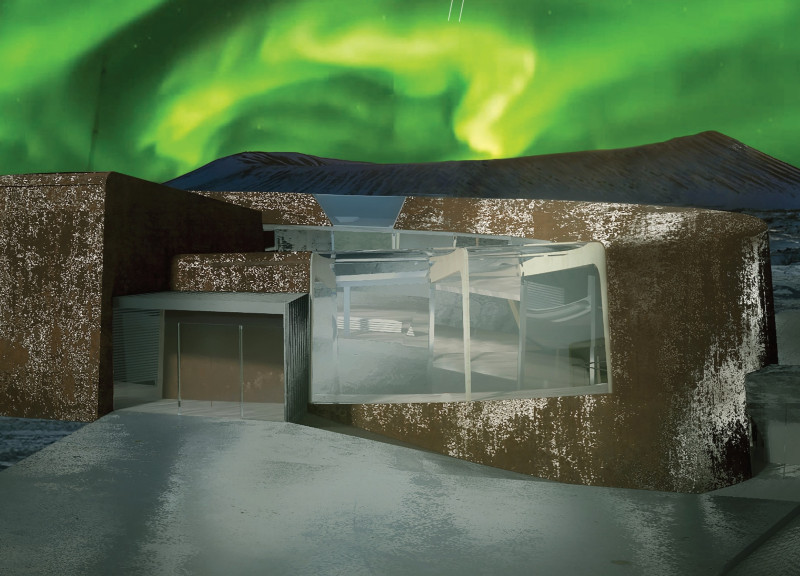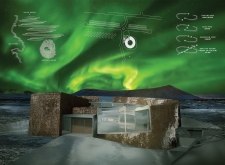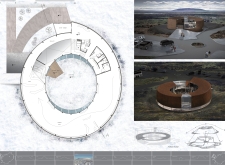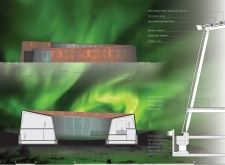5 key facts about this project
The primary function of the Volcan Museum is to provide educational resources and exhibitions revolving around volcanic activity, geology, and Iceland's unique environmental characteristics. The design utilizes open spaces for flexible exhibitions, engaging visitors through interactive displays that facilitate learning about the Earth’s processes. The strategic layout encourages exploration while allowing for natural light to permeate through expansive glass walls, creating a welcoming atmosphere.
Design Approach and Features
One of the notable aspects of the Volcan Museum is its integration with the landscape, drawing on local natural forms to inform the building's geometry. The circular design not only echoes the volcanic craters but also promotes a flow of movement within the museum. Multiple observation points are incorporated into the building design, providing panoramic views of the Hverfjall and Lake Mývatn, enhancing visitor engagement with the landscape and fostering a deeper appreciation for the geological phenomena that define the region.
Materiality is another critical component that distinguishes this project. The use of Rukki Lamella Cor-Ten panels contributes to the building's resilience, adapting to the harsh Icelandic climate without compromising aesthetics. Multi-laminated wooden beams are employed not only for structural integrity but to soften the interior environment, creating a comfortable setting for visitors. The introduction of glass curtain walls facilitates transparency between the indoor and outdoor spaces, inviting natural light and allowing visitors to connect with the surrounding landscape.
Architectural Spaces and Functionality
The internal layout of the Volcan Museum is designed to support a variety of uses. The entrance area is specifically created to provide a smooth transition into the museum, acting as a preliminary space to orient visitors. Various galleries and exhibition spaces are arranged to promote discovery and interaction, catering to individual visitors as well as group activities.
Furthermore, courtyards within the museum offer outdoor spaces that enhance the experiential quality of the environment. These areas serve not only as resting points but also as platforms for outdoor exhibits or community events, reinforcing the museum’s role as a community hub for education and tourism.
For more detailed insights into the architectural plans, sections, and designs of the Volcan Museum, interested individuals can explore the project's presentation for a comprehensive understanding of its design ideas and structural elements.


























